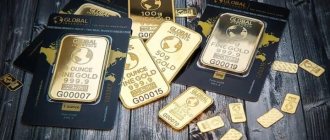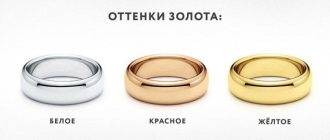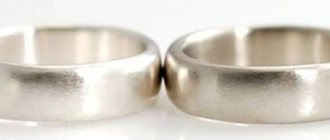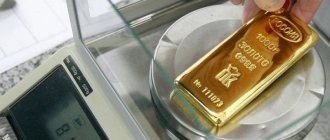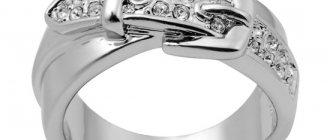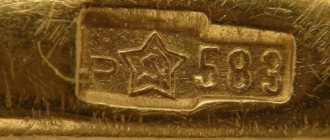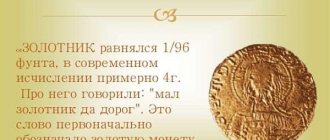Calculation of the mass of precious metals
Instruction No. 94-I of the Central Bank of Russia was issued in order to streamline transactions with precious stones and precious metals carried out by legal entities and individuals on the territory of the state.
Precious metals and stones are weighed using jewelry scales.
Description of jewelry terms
The Central Bank of the Russian Federation, in its instruction No. 94-I (Chapter 1), established the terms used when working with precious stones and precious metals, which you need to know before purchasing jewelry scales. According to this document, the following terminology should be used.
- Precious stones – this definition includes: natural diamonds;
- rubies;
- emeralds;
- alexandrites;
- sapphires;
- natural pearls, both in their natural form and processed.
- silver;
| Ligature weight in grams | Sample percentage equal to or greater | |
| Silver bars | 28000 – 32000 | 99,90 |
| Gold bars | 11000 – 13300 | 99,95 |
| Platinum bars | Less than or equal to 5500 | 99,90 |
| Palladium Ingots | Less than or equal to 3500 | 99,90 |
This also includes ingots produced outside of Russia (USSR) in accordance with the quality standards in force in the producing country.
- Dimensional ingots are called “precious metal ingots”, which are produced and labeled by Russian refining organizations (respectively, Soviet ones before 1992) in strict accordance with the provisions of the current industry and state regulations (standards), which have a mass
- Powders of precious metals - this definition refers to powders of metals belonging to the platinum group, which were manufactured by Russian (Soviet until 1992) refining organizations. These products are a powdery mass, the amount of chemically pure base precious metal in which is 99.99% or more of the mass of the powder (ligature).
This powder must be packaged in plastic jars or glass ampoules, which must be marked with the manufacturer’s markings, the net weight of which is:
| In plastic jars | In ampoules | |
| Palladium | Less than or equal to 7000g | Less than or equal to 25g |
| Platinum | Less than or equal to 7000g | Less than or equal to 50g |
| Rhodium | 25 – 5000 g | 0.1 – 25 g |
- Rolled products – cold-rolled strips of precious metal, produced and labeled by Russian/Soviet organizations performing refining work (after/before 1992). They are supplied as makeweights to batches of precious metals in ingots so that the mass of the batch corresponds to the specified value.
- Granules – silver (refined) in granules. As makeweights supplied to batches of the specified metal in standard ingots for the purposes specified in clause 6.
- Mass in alloy – mass of powder or alloy containing precious metals;
Sample - indicates the percentage of the total mass that is the precious metal in powder or alloy.
To account for precious metals, the unit “troy ounce” is introduced, equal to 31.1035 g.
And to account for precious stones, the “carat” accounting unit was introduced, equal to 0.2 g.
Types of measurements and accounting when accepting and issuing jewelry. Errors, equipment, weight discrepancies.
Quantitative accounting of materials (precious stones and precious metals) is carried out for each item separately. In this case, the following indicators must be reflected (see Table 2).
| Name of values | What is being measured | In what units is quantity measured? |
| Silver in rolled products, granules, measured or standard bars | Weight in ligature (ML) | In grams accurate to 1g |
| Rolled gold or any bullion | Mass of precious metal (chemically pure) | In grams with an accuracy of 0.1g |
| Palladium, platinum, silver and gold coins | Mass of precious metal (chemically pure) | In grams with an accuracy of 0.01g |
| Metals belonging to the platinum group, in powder, rolled products, standard or measured ingots | ML | In grams with an accuracy of 0.1g |
| Precious stones | Weight | Carats. Measurement accuracy up to 0.01 carats |
The mass of precious metals (PM) is determined by weighing them on general-purpose scales that have metrological characteristics not lower than:
- accuracy class 2 - for scales with NPM
- Accuracy class 3 – for scales with NPM 200g.
Permissible errors are regulated by the provisions of the national standard 53228-2008.
The specified GOST R was approved by Rostekhregulirovaniya on December 25, 2008 by order No. 739-st. It is recommended to weigh stones classified as precious stones (GK) on special scales (analytical or carat) with a specified weighing accuracy. If the weight of the DC is less than 1000 carats - 0.01 carats, more - 0.05 carats.
Scales approved for use in weighing recreational facilities must have an NPM corresponding to that specified in the third table of instruction 94-I (Chapter 2).
The mass of the ML and the mass of the DC are determined based on the actual readings of the weighing equipment in units and with the accuracy specified above. However, rounding is prohibited.
The mass of a chemically pure precious metal is calculated by multiplying the ML by the sample of a particular alloy. The result is expressed as a decimal fraction. It contains the actual sample value after the decimal point.
In cases where the cost of precious metals is expressed in dollars per troy ounce, it is necessary to perform a number of operations:
- Convert the mass of the metal to troy ounces by dividing the value in grams by 31.1035. Calculations must be carried out with an accuracy of 0.001 troy ounce with established rules and permitted rounding;
- then the resulting value is multiplied by the metal price in dollars;
- The ruble equivalent is obtained by multiplying the result in dollars by the official exchange rate of a given currency, established by the Central Bank of the Russian Federation on the day the value of the metal is calculated.
The cost of a recreation center is established according to the price list for a recreation center in force in the Russian Federation. This document is compiled in detail. It lists prices in rubles or dollars per carat for each category of recreational products. If necessary, the specified price list can be requested from Gokhran.
1 Comment
kilogramus.ru
GLAVBUKH-INFO
Investment coins - these are coins made of precious metal (gold, silver, platinum, palladium), the content of which in their composition is maximum - 90% or more of the alloy weight of the coin. The quality of the minting of investment coins is low, in this case it does not matter, since investment coins do not have artistic value. The name of the coins speaks for itself - their purpose is to preserve and increase the funds invested in them (investments), and this is due to the fact that the cost of an investment coin is as close as possible to the value of the precious metal it contains. Investment coins are issued by the central banks of countries, in Russia by the Bank of Russia, for investment purposes.! For reference:
Ligature weight of a coin is the total weight of the coin in grams.
“Proof” is a technology for minting coins and medals of the highest quality. The use of special machines, special processing methods, and a high proportion of manual labor allows us to achieve a perfectly smooth mirror surface of the coin and a contrasting matte relief. It is used, as a rule, for minting collectible and commemorative coins. The ProofLike “proof-like” option is similar to “proof”, but at the same time does not have a 100% guarantee that the “proof” technology is followed.
“Uncirculated” (AC) – minting of coins of ordinary quality. Their minting production is fully automated and has a large circulation. Used for coins in circulation as means of payment and investment coins. Uncirculated quality coins have a regular, smooth, non-mirror surface with similar non-contrasting reliefs and inscriptions; the design is simple and single-fold.
Brilliant uncirculated (BA) is a coinage of improved quality compared to uncirculated coins.
Coin legend – all inscriptions and numbers on the coin
Obverse – the front side of the coin
Reverse - the back side of the coin
Edge – side surface of a coin
Investment coins issued in Russia (data for 2011)
Golden chervonets
Produced in 1975, 1976, 1977, 1978, 1979, 1980, 1981, 1982 Total circulation 6,565,000 pieces
Obverse
Reverse
Denomination: 10 rubles Metal: gold, 900 purity Quality: AC Ligature mass: 8.603(±0.08) g. Content of chemically pure metal: not less than 7.742 g. Diameter: 22.60(+10 -0.15) mm Thickness: 1.70(+0.05 -0.15) mm
St. George the Victorious (gold)
Produced in 2006,2007,2008,2009,2010, 2013 Total circulation: 3,920,000 pieces
Obverse
Reverse
Denomination: 50 rubles Metal: gold, 999 purity Quality: AC Ligature weight: 7.89 (±0.10) g. Content of chemically pure metal: not less than 7.78 g. Diameter: 22.60 (±0.15) mm Thickness: 1.60 (±0.20) mm
St. George the Victorious (silver)
Produced in 2009. Total circulation: 280,000 pieces.
Obverse
Reverse
Denomination: 3 rubles Metal: silver, 999 purity Quality: AC Ligature mass: 31.50 (±0.35) g. Content of chemically pure metal: not less than 31.10 g. Diameter: 39.00 (±0.30) mm Thickness: 3.10 (±0.35) mm
Sable
Produced in 1995. Total circulation: 1,000,000 pieces.
Obverse
Reverse
Denomination: 3 rubles Metal: silver, 925 standard Quality: AC Ligature weight: 33.93 (±0.30) g. Content of chemically pure metal: not less than 31.1035 g. Diameter: 39.00 (±0.20) mm Thickness: 3.20 (±0.35) mm
River Beaver 08
Produced in 2008. Total circulation: 12,000 pieces.
Obverse
Reverse
Denomination: 100 rubles Metal: gold, 900 purity Quality: AC Ligature weight: 17.45 (±0.17) g. Content of chemically pure metal: not less than 15.55 g. Diameter: 30.00 (±0.25) mm Thickness: 1.70 (±0.20) gr.
History of money circulation 09
Produced in 2009. Total circulation: 27,000 pieces.
Obverse
Reverse
Denomination: 100 rubles Metal: gold, 900 purity Quality: AC Ligature weight: 17.45 (±0.17) g. Content of chemically pure metal: not less than 15.55 g. Diameter: 30.00 (±0.25) mm Thickness: 1.70 (±0.20) gr.
Zodiac signs
Produced in 2002,2003,2004, 2005 Total circulation 360,000 pieces
Obverse
Reverse
Denomination: 25 rubles Metal: gold, 999 purity Quality: AC Ligature mass: 3.20 (±0.08) g. Content of chemically pure metal: not less than 3.11 g. Diameter: 16.00(±0.12) mm Thickness: 1.30 (±0.20) gr.
Obverse
Reverse
Denomination: 50 rubles Metal: gold, 999 purity Quality: AC Ligature weight: 7.89 (±0.10) g. Content of chemically pure metal: not less than 7.78 g. Diameter: 22.60 (±0.15) mm Thickness: 1.60 (±0.20) gr.
Leopard “100 rubles” (GOLD)
Produced in 2011 Total circulation 100,000 pieces
Obverse
Reverse
Denomination: 100 rubles Metal: gold, purity 999/1000 Quality: AC Ligature weight: 15.82 (+- 0.25) Content of chemically pure metal: 15.55 Dimensions: length 28.00 (+-0.25) width 17.00 (+- 0.2) Thickness: 2.20 (+- 0.20)
Leopard “50 rubles” (GOLD)
Produced in 2011 Total circulation 300,000 pieces
Obverse
Reverse
Denomination: 50 rubles Metal: gold, fineness 999/1000 Quality: AC Ligature mass: 7.95 (+- 0.15) Content of chemically pure metal: 7.78 Dimensions: length 20.00 (+-0.18) width 14.00 (+- 0.1) Thickness: 1.80 (+- 0.20)
Leopard “3 rubles” (SILVER)
Produced in 2011 Total circulation 300,000 pieces
Obverse
Reverse
Denomination: 3 rubles Metal: silver, fineness 999/1000 Quality: AC Ligature weight: 31.50 (+- 0.35) Content of chemically pure metal: 31.10 Dimensions: length 35.00 (+-0.30) width 23.00 (+- 0.20) Thickness: 4.20 (+- 0.30)
Bunny “3 rubles” (SILVER)
Released in 2013 Total circulation 300,000 pieces
Obverse
Reverse
Denomination: 3 rubles Metal: silver, fineness 999/1000 Quality: AC Ligature weight: 31.50 (+- 0.35) Content of chemically pure metal: 31.10 Dimensions: length 35.00 (+-0.25) width 23.00 (+- 0.20) Thickness: 4.20 (+- 0.30)
Bunny “50 rubles” (GOLD)
Released in 2013 Total circulation 300,000 pieces
Obverse
Reverse
Denomination: 50 rubles Metal: gold, fineness 999/1000 Quality: AC Ligature mass: 7.95 (+- 0.15) Content of chemically pure metal: 7.78 Dimensions: length 20.00 (+-0.18) width 14.00 (+-0.10) Thickness: 1.80 (+- 0.20)
Bunny “100 rubles” (GOLD)
Released in 2013 Total circulation 100,000 pieces
Obverse
Reverse
Denomination: 100 rubles Metal: gold, purity 999/1000 Quality: AC Ligature weight: 15.82 (+- 0.25) Content of chemically pure metal: 15.55 Dimensions: length 28.00 (+-0.25) width 17.00 (+-0.20) Thickness: 2.20 (+- 0.20)
| Next > |
What is a gold ligature: characteristics, samples
Most jewelry owners don't even know what a gold ligature is. In fact, the appearance and durability of jewelry depends on its characteristics.
Why do you need a ligature and is it possible to do without it?
In the jewelry industry, the alloy for gold is extremely important - by adding various elements to the alloy, you can achieve significant changes in the characteristics of a gold product, such as strength or appearance. It should be taken into account that only pure metals are used as an additional element, without any impurities. This does not mean that gold can only be mixed with one specific element; the combination of several metals is allowed and quite successfully used.
Pure gold is a rather soft and very ductile metal, and such jewelry made from it will be quite difficult to wear without worrying about its safety. This is why a ligature is used - by adding other elements to it, it becomes possible to significantly increase the strength of the product.
What is it?
The amount of pure gold is indicated in the hallmark of the jewelry. There are 4 types of samples: metric, carat, spool and lot. The most popular is metric, consisting of 3 digits: they indicate the amount of gold per 1 kilogram of product mass. For example, fineness 999 means that in one kilogram of the alloy there is only 1 gram of alloy - everything else is pure noble metal. But it is unlikely that you will be able to wear such jewelry successfully, due to the softness of the material.
There are several samples:
- 375. the lowest sample, in which 62.5% is ligature. Products with such a hallmark are notable for their low cost, but are significantly stronger and more durable than more expensive jewelry;
- 583, “Soviet” gold. Today, the manufacture of goods from this alloy is not carried out. The share of occurrence of other metals is 41.7%;
- 585. The most popular hallmark is a stamp containing these numbers, which are found on almost every piece of jewelry. Perfectly combines high performance characteristics and excellent appearance. The ligature accounts for 41.5% of the total mass;
- 750 sample. This product accounts for 75% pure metal. Products made in this way are highly expensive, since the composition also includes precious metals;
- 958 standard is practically not used in jewelry. Bullions are usually obtained from it, which are then used in the banking industry.
How does the ligature depend on the color of the decoration?
Depending on the elements added to the ligature, the shade of the resulting products also differs: White. Appears as a result of mixing the precious metal with palladium, platinum, manganese or nickel. The composition was considered one of the most popular at the beginning of the last century. Yellow. The shade inherent in a natural noble metal. The alloy contains only copper and silver. Red. Red or royal gold is obtained by adding copper to the base metal. Products made using this method are highly durable. The green tint is obtained by adding silver or rubidium. The greater the amount of silver, the lighter the product will be. But the resulting items are quite fragile, despite their stunning appearance. The black product owes its appearance to the presence of rhodium or ruthenium in the alloy. Compounds of chromium and cobalt are used as analogues, after which the surface of the objects is oxidized artificially.
Why is the decoration yellow or white in one test?
The white tint of the product is due to the presence of the following metals: platinum, palladium or silver in the alloy. The most expensive alloy is mixed with platinum - not all consumers can afford such jewelry. Compositions with nickel are more accessible, and they can be identified by their less bright shine, vaguely reminiscent of jewelry silver. But it is worth knowing that products made from this alloy negatively affect the health of the owner, often causing allergies. Adding only 1/10 of platinum often gives the composition shine and a distinctive white color, significantly increasing strength and increasing the material’s resistance to chemical attack. 585 standard contains a little more than half of gold, the rest consists of silver or platinum, which ensures the white color of the product. Impurities of palladium or nickel give a barely noticeable yellowish tint.
To obtain a pronounced white color, the composition is additionally coated with a layer of rhodium, an element belonging to the platinum group of metals, which gives the product high resistance to mechanical stress. The cost of this metal exceeds the cost of gold, and for this reason the value of such jewelry is comparable to the value of objects made of pure precious metal. Also, such decorations are absolutely harmless to health.
The difference between white gold and silver jewelry
Despite the external similarity, there are several differences by which you can find out whether the product is silver or gold
- Try. For silver jewelry it is 925. White gold is found in stores only 585 or 750.
- Gold items are significantly harder than silver items.
- Silver does not shine as brightly as white gold.
A ligature in gold allows you to completely change the properties of the metal, making it possible to obtain real masterpieces. It is thanks to the chemical properties of various alloys that today everyone can find jewelry to suit their taste.
tozoloto.ru
Why are ligature projects needed?
Pure gold is a fairly soft metal. It is so plastic and pliable that you can easily knead it with your hands. This material is not suitable for making jewelry. What is the secret of the craftsmen who make jewelry?
The fact is that there are methods that increase the strength of the gold alloy, otherwise it is called a gold alloy. Making jewelry is a complex and labor-intensive process, so gold ligature is an important part of the process.
By adding different ingredients to the alloy composition, you can get serious changes in the characteristics of the future product, you can significantly increase strength and durability, and it becomes possible to change the appearance. It is important to note that only pure metal is always taken as an element that complements the composition.
Definition of ligature, its composition
The definition of ligature in metallurgy is understandable even to an uneducated person. In fact, this is an elementary additive to a particular alloy, thanks to which the quality indicators of the alloy can be improved.
Ligature in jewelry is an opportunity to change the strength of gold, but not only. Thanks to it, the color of the jewelry changes, and, accordingly, its appearance, which greatly affects the presentability of the product. Not every owner of jewelry is interested in what the actual composition of the alloy of the product is. Typically, it includes the following elements:
- silver;
- copper;
- platinum;
- palladium;
- nickel.
Each type of alloy has its own specific proportions, which must be strictly observed.
Types and properties
The ligature is distinguished by the ingredients included in the alloy. Thus, it can be assumed that there are a large number of its species. It all depends on which component needs to be added. Sometimes the type of ligature indicates the addition of a precious or base metal. It is necessary to clarify that each component is added separately, with a certain order, in a strictly designated proportion.
With the help of various ligature compositions and modern equipment, jewelry craftsmen are able to give gold interesting directions in color and shades:
The alloy weight of gold, for example, depends on the density and quality characteristics of the filler materials.
The pure gold content of an alloy is a value called fineness; the higher the fineness, the more precious metal there is in the composition. It is this that primarily affects the cost of the finished product. The sample is measured according to three world systems: metric, carat and spool. Nevertheless, the ligature plays a very important role in jewelry. It allows the alloy to improve and gives it:
- plasticity, malleability;
- elasticity, hardness;
- color and shades;
- durability, wear resistance.
Using imagination and the possibilities of alloying, jewelry craftsmen create true masterpieces. Some parts of one piece of jewelry are made of different alloys, but with the same purity.
www.bsn-gold.ru
Marking and weight of measured and standard bullion bars of precious metals
Before investing in gold bars, you should carefully study all the information, compare all the pros and cons, and only then make a deposit. In this case, let's start with information about what measured and standard bars of gold and precious metals are available.
Precious metal ingots are ingots (measured and standard) of precious metals, refined in factories to the highest standards, and meeting state standards.
Bullions produced in the European Union comply with international standards established by the London Bullion Market Association (LBMA).
All bars must meet state standards, which you will learn about in this article.
Gold and silver bullion bars
What kind of ingots are called measured?
Ingots
Ingots produced by Russian refineries in accordance with GOST and production standards. The weight of the ingots ranges from 1-1000 grams, the percentage of pure metal is at least 99.9%.
Let's take a closer look at the standards for gold bullion bars and bullion bars containing silver:
GOST R, which corresponds to:
- Gold measured bars – 51572-2000.
- Silver measuring bars – 51584-2001.
According to these GOSTs, gold and silver bars must meet the following parameters:
- The dimensions are established by these GOSTs in accordance with the weight of the ingots; the thickness is not standardized in any way. The rules allow the production of ingots of any size, which are agreed upon between the customer and the manufacturer (but weighing no more than 1000 grams).
- The ingots must have no signs of damage, plaque, cracks, etc.
- All ingots must be marked in accordance with all requirements.
Let's look at the marking of a measuring ingot using an example:
- Ingot weight (nominal) in grams. The inscription (name of the metal), in this case “GOLD” or “SILVER”.
- The mass of precious metal in an ingot in its pure form (fine gold (silver)).
- Sign of the factory where the ingot was produced.
- Serial number (code) of the ingot. For bars smaller than 50 grams, the code may be printed on the reverse side.
What platinum bars are called measured
At its core, the marking of platinum bars is exactly the same as gold and silver, but there are a number of features that distinguish platinum bars from the rest:
- GOST R which corresponds to – 51704-2001;
- There are two samples from which measuring ingots are made. These are 999.8 and 999.5, respectively, the percentage of pure platinum in bars - 99.8% and 99.5%;
- The dimensions are established by these GOSTs in accordance with the weight of the ingots; the thickness is not standardized in any way. The rules allow the production of ingots of any size, which are agreed upon by the customer and the manufacturer (but weighing from 5 to 500 grams);
- For bars less than 100 grams, the code may be printed on the reverse side.
Weight and dimensions of measured gold bars
The weight of a gold bar may vary. Measured ingots can be of two types: cast (SL) and stamped (SS). The letters that follow directly indicate what metal is made of and the weight of the ingot itself. For example, SShZ 500 is a stamped gold ingot weighing 500 grams, or SLSr 100 is a cast silver ingot weighing 100 grams.
The table below shows the weight of the gold bar and the dimensions that correspond to GOST. These indicators are characteristic of both silver and platinum ingots.
GOST is not provided for palladium ingots! And accordingly they are not released.
Standard precious metal bars
Standard Ingots
Standard precious metal bars are bars that are produced and marked by Russian refineries in accordance with all GOSTs. They receive the status “Good Delivery” - “Reliable Delivery”.
Relevant GOSTs:
- Gold standard bars – GOST 28058-89.
- Silver standard bars – GOST 28595-90.
- Platinum standard bars – GOST 3190-2005, GOST R 52245-2004.
- Standard Palladium ingots - GOST 31291-2005, GOST R 52244-2004.
Table of the weight of a standard bar of gold, silver, platinum or palladium, as well as the purity of the metal
Ingot certification
Each bullion must have a personal certificate, which in turn must include the following information:
- GOST ingot;
- Ingot No.;
- Ingot weight;
- Brief information (notations);
- Date of issue;
- Signature of a representative of the technical quality department;
- Signature of a representative of the Russian State Assay Inspectorate.
Each manufacturing plant has its own unique labeling system, which must be indicated in the certificate.
goldinside.ru
Russian factories included in the Good Delivery list
In world practice, standard ingots of precious metals of very good quality, with high purity and the mark of repeatedly tested reputable refining enterprises LBMA and LPPM are assigned the status of Good Delivery, which allows the products of the enterprises to be highly valued and enter the international precious metals market.
Read also: Profitable bank for cash withdrawal individual entrepreneurs
The Good Delivery list includes more than 55 companies from 28 countries for gold, 68 companies from 27 countries for silver, 30 companies from 10 countries for platinum and 23 companies from 9 countries for palladium.
Good Delivery status for precious metal bars has been assigned to the products of the following enterprises of the Russian Federation:
| №№ | Enterprises that have been assigned Good Delivery Status | Good Delivery on: | ||
| standard gold bars | standard silver bars | platinum and palladium bars | ||
| 1. | Yekaterinburg Non-Ferrous Metals Processing Plant | assigned | assigned | assigned |
| 2. | Novosibirsk Refinery | assigned | assigned | assigned |
| 3. | Shchelkovo secondary precious metals plant | assigned | assigned | – |
| 4. | Prioksky Non-Ferrous Metals Plant | assigned | assigned | assigned |
| 5. | Krasnoyarsk Non-Ferrous Metals Plant | assigned | assigned | assigned |
| 6. | Kolyma Refinery | assigned | – | – |
| 7. | Uralelectromed | – | assigned | – |
